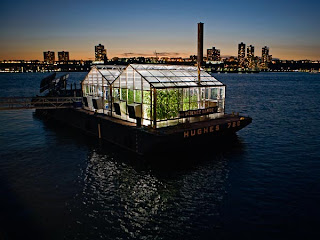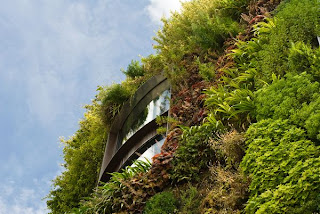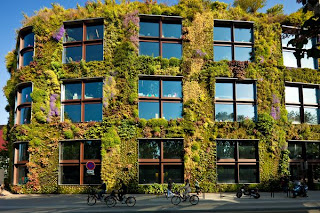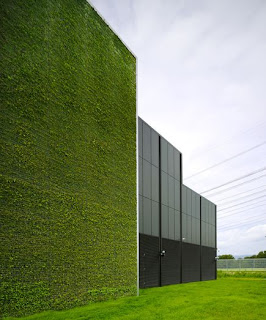When I was pondering on how to make the world pollution free? What could be the next step towards go green? Suddenly my eyes dragged myself on sac en papier (paper bags). Paper bags: how can be an
advantageous? Then the answer comes out was unsurpassed assets of recycling which going to impact on world as an idol of Happy Environment.
That time I had recalled one line said by Mahatma Gandhi that "You must be the change you wish to see in the world."
That's definitely true when it comes to saving the environment, we all are equal responsible to make the changes and decisions that will help the natural world to breathe right around us. But it will have lesser impact if we only going to make decisions or choices. The power shows to environment only if we make everyone to select environmental choice. If we all implement these words in our regular life it will no doubly give ample impact in healing the environment disasters.
So play your part by taking Paper bags for carry your products and then asking everyone you know to join you. You by no means know … you might just end up to be one of the heroes that help to save our environment.
This is my view on paper bags. After getting across of process of manufacturing and it’s characteristic of being eco friendly I bet that you are going to hold my hand on the way of go green by having it.
That's definitely true when it comes to saving the environment, we all are equal responsible to make the changes and decisions that will help the natural world to breathe right around us. But it will have lesser impact if we only going to make decisions or choices. The power shows to environment only if we make everyone to select environmental choice. If we all implement these words in our regular life it will no doubly give ample impact in healing the environment disasters.
So play your part by taking Paper bags for carry your products and then asking everyone you know to join you. You by no means know … you might just end up to be one of the heroes that help to save our environment.
This is my view on paper bags. After getting across of process of manufacturing and it’s characteristic of being eco friendly I bet that you are going to hold my hand on the way of go green by having it.
How paper bags get manufactured?
This is I know hardly known by anyone : Margaret Knight mother of sac en papier (paper bags) , Francis Wolle who had invented machine for paper bags who was a botanist, clergyman, and a teacher and Luther Childs Crowell Inventor of paper bags.
It is very sound knowledge that paper comes out only from logs. But what if I deny it!!! You will come to know as you will go across.
In brief the first step is to send logs to debark it and then sent them to mill for drying for two to three years. Once they are dried they are exposed to heat, chemicals and pressure to make
oatmeal type of pulp.
But if manufacturers are going to use recycled paper then the process would be shorten because the pulp doesn’t need to dry. It’s just when pulp is formed, just cuts, glues and packaged is
ready.
Paper bags are divided in two categories: single layer and Multi layer.
Bottom: flat gusseted paper bags. plastic window paper bags, self-opening, Paper shopping bags, brown paper bags, grocery bags, paper bread bags and other light duty bags have a single layer of paper.
Paper bags are not waterproof. Thought there are some types like Laminated paper bags. The laminated bag that is not totally waterproof. But has a laminate that protects the outside of the
bag to some degree.
When it comes to printed paper bags, it requires several layers of sack paper which have printed external layer and inner plies. Meanwhile some paper sack polyethylene foil or polyethylene
paper layer in between that prevents it from water.
There are two basic designs of bags: open mouth bags and valve bags.
An open mouth bag is a tube of paper plies with the bottom end sealed. The bag is filled through the open mouth and then it is closed by stitching, adhesive, or tape or zip.
Valve sacks have both ends closed and are filled through a valve. A typical example of a valve bag is the coffee sack. This is how paper get manufactured. But the core is “Paper”.
What makes paper likely to nature?
In brief after blog debarking and chipping production of paper starts with pressing moist fibers together, generally that cellulose pulp have taken out from wood , grasses or wood and drying them into
sheets.
Chemical pulping
This process is used to make pulp from wood. That separates lignin (Derived from wood and an integral part of the wall of secondary wall ) from cellulose fibers by dissolving lignin in a cooking liquor that help to washed it from cellulose fibers. This process prevents
the length of the cellulose fibers. These papers are known as “wood free papers”. This is because they do not contain lignin that get deteriorate as time pass. Paper pulp can also be bleached to
make it white paper. This white paper consumes 5% of the fibers.
Chemical pulping can done by three different process. sulfite process(1940) , and Kraft process(1970) and Soda pulping.
Among these three processes Kraft process is now the most commonly implemented process. This process produces heat during the chemical reaction with lignin. That can be used to run a generator. This is the best way to be a net contributor to the electricity grid as well can run an adjacent paper mill. One more benefit is all process recovers and reuses almost all inorganic chemical reagents. Mechanical pulping
Mechanical pulping
This process is either done by thermo mechanical pulp (TMP) or ground wood pulp (GW).
TMP process use steam heated refiners where the wood chips are squeezed and turns into fibers between two steel discs. While GM process use rotating stones grinders that presses the
debarked logs into fibers. Process does not take out the lignin that yields it very high like more than 95 %. This makes paper to yellow and becomes brittle as time last. Paper made by this
process results in very weak paper. But it’s cheaper then chemical pulp.
Additives
Some additives are used in paper to enhance the characteristic of the paper. It may contain fillers like china clay or chalk for improving printing quality. Additives for sizing purpose can be added later in the manufacturing process. This sizing gives correct level of surface for printing to suit the ink or paint.
Forming & Dewatering
When the pulp is fed to paper machine water is removed by pressing and drying. By pressing the sheet water gets removed by force and felt is used to collect that water. This drying can be done by heat or air also. The most frequent method is steam heated can dryer that heat to above 200 °F (93 °C) and can used in long sequences like 40 cans.
Coating
Paper is uncoated after the dewatering process. China clay or calcium carbonate are used to create a thin layer on paper either one or two side. That gives high resolution to screen.
Calendering
Calendering is the process to make the sheet more smoother by passing it under series of hard pressure rollers after that they are divided in matte, semi-matte or silk, and gloss. After that the paper is ready to fed on reels where fibers run in the machine direction only.















China Paper Bags is a Leading Kraft Paper Bags, Paper Bags Manufacturer Factory Supplier specializes in various types of customized paper bags from China. We always keep providing "quality paper bags & kraft paper bags, excellent service, competitive prices and prompt delivery". Quality is ensured by our QC members with up to 10 years of experience as a China Paper Bags & kraft paper bags Manufacturer, Factory & Supplier. If for any reason a mistake is made by us, we will remake your paper bags urgently for you, free of charge.
ReplyDeleteVisit here : Paper Bag Factory China
Bags has experience manufacturers and suppliers who make quality paper bags manufacturer for carrying many goods. We always make recyclable and environmentally friendly bags. Our Paper Bags are manufactured from sustainable materials. Our teams mainly use the wood pulp to make branded and efficient paper bags.
ReplyDelete